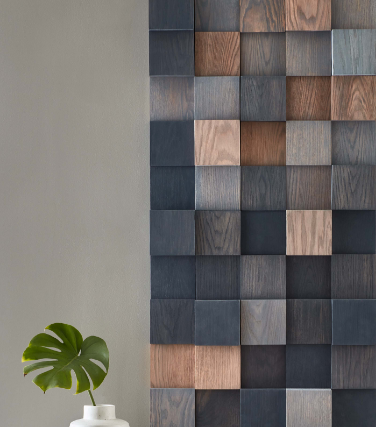Ambering
The tendency of a clear protective finish to take on a warm, yellow appearance as it ages.
HOW-TO
Useful information for successful wood projects.

HOW-TO
Useful information for successful wood projects.
The tendency of a clear protective finish to take on a warm, yellow appearance as it ages.
A staining phenomenon occurring when the stain seeps back to the surface of the wood.
Lines or ridges left by the brush and dried in the finish.
The wood surface exposed when a board is cut across the grain, opening the elongated pores so that they absorb more liquid than the other parts of the board.
The metal band used to hold the bristles to the handle of a brush.
Tips of bristles that have been intentionally split to carry more liquid from the can to the wood.
A surface shininess or sheen, ranging from satin to semi-gloss to high gloss.
The arrangement or direction of the fibers in wood.
A technique that uses stain to duplicate the grain pattern of a type of wood on a non-wood surface.
A condition that occurs on the surface of wood when its fibers absorb water, causing them to stand, and giving the wood a rough surface.
The numbering system that reflects the relative coarseness of the abrasive particles on sandpaper. Lower grit numbers indicate coarse abrasives; higher grit numbers, finer abrasives.
Wood that comes from broad-leafed trees, such as oak, walnut and maple.
The hard cross-grained mass of wood that forms where a tree branch meets the trunk. In a sawn board, it is darker and harder than the surrounding wood.
A clear or pigmented protective coating, formulated with cellulosic or synthetic resins to dry by evaporation, forming a solid film.
The "flowing out" of a freshly applied finish, during which brush marks disappear.
A distillation product of petroleum used as a thinner for oil-based paints, varnishes and stains.
A stain or clear protective finish comprised of resins dispersed or dissolved in a solvent such as alcohol or mineral spirits.
Finish, propelled by aerosol cans that lands and dries on surfaces other than the target.
A synthetic resin used to formulate durable varnishes.
An exceptionally hard and wear-resistance varnish noted for its overall balance of high-performance properties including durability and abrasion resistance and household chemical resistance.
Cell-like cavities that characterize the grain of the wood.
A finish defect resulting from too much finish on a vertical or tilted surface.
A varnish made by dissolving lac (a natural resin) in denatured alcohol.
Wood that comes from trees that bear needles such as pine and fir.
Any liquid that can be used to dissolve other substances. The most common solvents in wood finishing are water, mineral spirits, denatured alcohol, acetone, turpentine, and toluene.
A durable varnish formulated for exterior use; it remains slightly softer and more flexible than interior varnish allowing it to expand and contract with changing weather conditions.
Any of several products containing dyes and/or pigments to add color to wood.
A clear protective finish, such as polyurethane, that is applied over bare or stained wood.
A preparation for coating wood surfaces, consisting of resins dissolved in oil, denatured alcohol or water.
A stain or clear protective finish comprised of resins dispersed, dissolved or emulsified in water.
A liquid applied prior to staining to obtain even stain penetration and uniform color. In the case of water-based products, wood conditioner also controls grain raise.